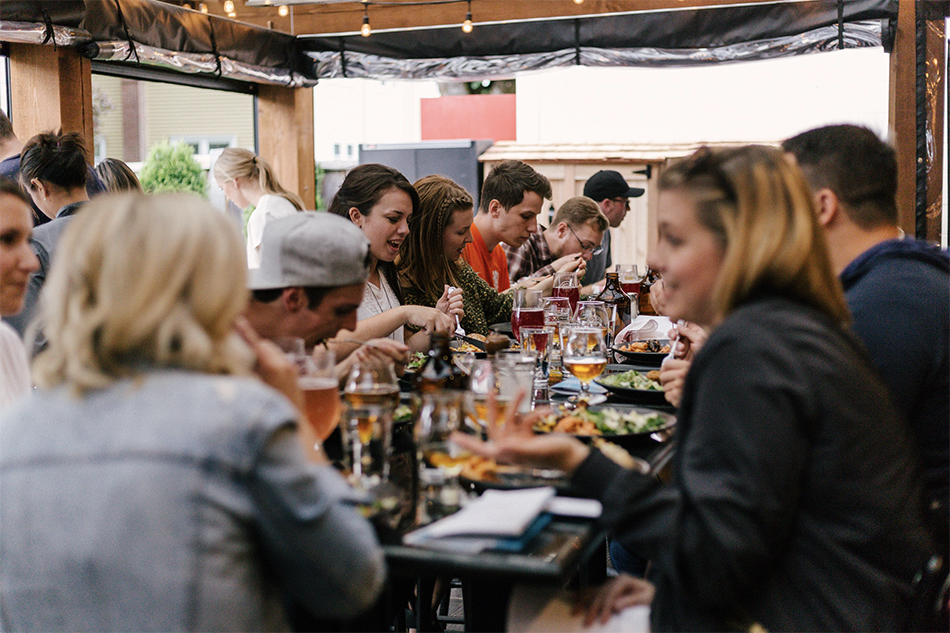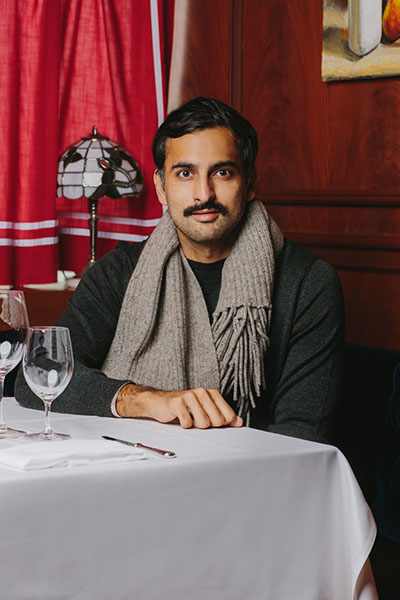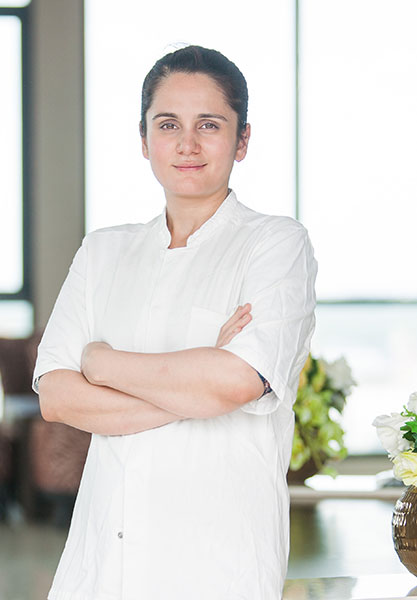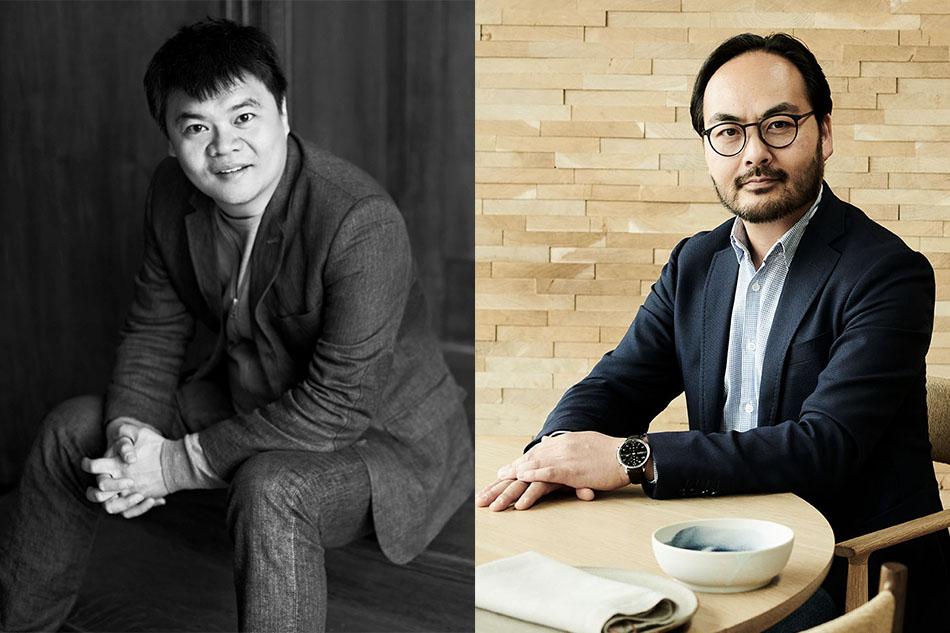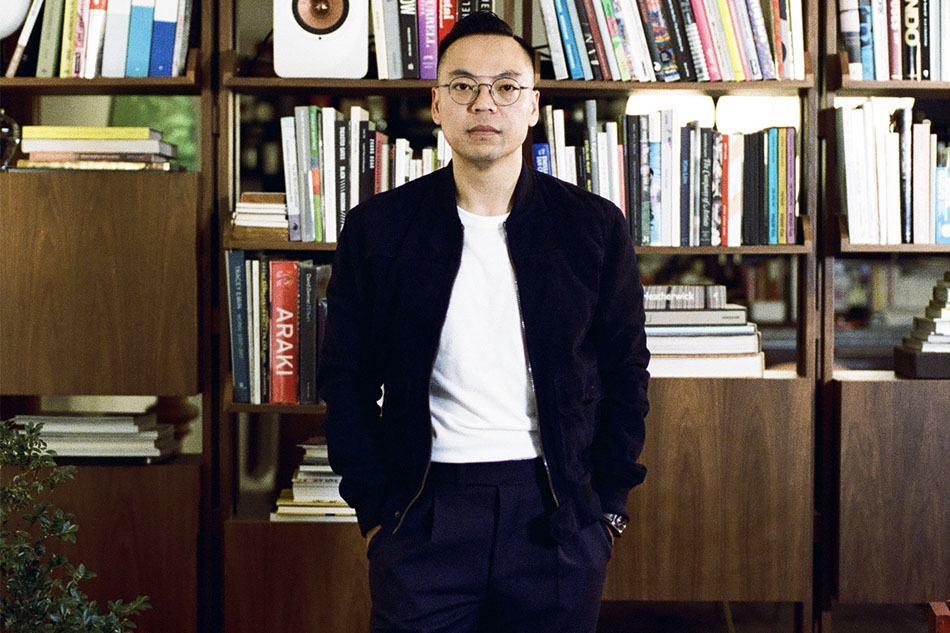What the future of restaurants could look like after the ECQ is lifted | ABS-CBN
ADVERTISEMENT

Welcome, Kapamilya! We use cookies to improve your browsing experience. Continuing to use this site means you agree to our use of cookies. Tell me more!
What the future of restaurants could look like after the ECQ is lifted
What the future of restaurants could look like after the ECQ is lifted
ANCX
Published Apr 28, 2020 04:12 PM PHT
|
Updated Apr 29, 2020 03:23 PM PHT
It’s called a replicator. Star Trek aficionados may know it from The Next Generation series of old as a computer that can magically conjure food out of pure energy. It’s food that is untouched by humans, with no need for raw ingredients or even a kitchen, guaranteeing a 100% virus or contaminant-free dish. Whether it tastes delicious, brings comfort, or elicits pleasure is beside the point. The replicator is efficient, sustainable, and safe. Is this a glimpse into the future of “COVID-safe” dining as we know it?
It’s called a replicator. Star Trek aficionados may know it from The Next Generation series of old as a computer that can magically conjure food out of pure energy. It’s food that is untouched by humans, with no need for raw ingredients or even a kitchen, guaranteeing a 100% virus or contaminant-free dish. Whether it tastes delicious, brings comfort, or elicits pleasure is beside the point. The replicator is efficient, sustainable, and safe. Is this a glimpse into the future of “COVID-safe” dining as we know it?
Granted, replicator technology is still science fiction, but there now is that sense that what makes dining out such an enjoyable experience—clinking glasses with friends, sharing bites from small plates, warming up to the buzz of a crowded dining room—can potentially make you sick.
Granted, replicator technology is still science fiction, but there now is that sense that what makes dining out such an enjoyable experience—clinking glasses with friends, sharing bites from small plates, warming up to the buzz of a crowded dining room—can potentially make you sick.
Right now, Luzon’s enhanced community quarantine (ECQ) is seeing chefs and restaurateurs feeding frontliners and barangays, checking on their employees, rejiggering their menu items for delivery, reworking their supply chains, renegotiating leases. Yes, it’s a busy time, but looming over everyone’s heads is the uncertainty after the ECQ is lifted. How can restaurants safely serve its customers, especially with COVID-19 not disappearing any time soon, and with no vaccine in sight?
Right now, Luzon’s enhanced community quarantine (ECQ) is seeing chefs and restaurateurs feeding frontliners and barangays, checking on their employees, rejiggering their menu items for delivery, reworking their supply chains, renegotiating leases. Yes, it’s a busy time, but looming over everyone’s heads is the uncertainty after the ECQ is lifted. How can restaurants safely serve its customers, especially with COVID-19 not disappearing any time soon, and with no vaccine in sight?
While no one has a crystal ball, there are already indications of where we’ll be heading. Foreign players discussed their insights during a webinar titled “Catch The Experts: Can the Restaurant Industry Survive COVID-19” by CatchOn, A Finn Partners Company. ANCX also spoke with a leading local chef-restaurateur who shared some of the new ideas he’s been working on.
While no one has a crystal ball, there are already indications of where we’ll be heading. Foreign players discussed their insights during a webinar titled “Catch The Experts: Can the Restaurant Industry Survive COVID-19” by CatchOn, A Finn Partners Company. ANCX also spoke with a leading local chef-restaurateur who shared some of the new ideas he’s been working on.
ADVERTISEMENT
Safety as the new delicious
Safety as the new delicious
“Safety first before everything else,” proclaims Robby Goco, the chef-owner behind the popular Cyma, Souv, and Green Pastures restaurants. He closed his outlets days before quarantine was officially announced, and then only opened four branches so far (Cyma in Eastwood, Souv in Alabang and The Podium, Green Pastures in BGC) in mid-April. He explains, “If I can’t make my restaurant safe or my food safe, I might as well not do it. So for a month, all we did was meet with my staff, trying to figure out how to make everything safe for the employees, to make sure our production is safe.”
“Safety first before everything else,” proclaims Robby Goco, the chef-owner behind the popular Cyma, Souv, and Green Pastures restaurants. He closed his outlets days before quarantine was officially announced, and then only opened four branches so far (Cyma in Eastwood, Souv in Alabang and The Podium, Green Pastures in BGC) in mid-April. He explains, “If I can’t make my restaurant safe or my food safe, I might as well not do it. So for a month, all we did was meet with my staff, trying to figure out how to make everything safe for the employees, to make sure our production is safe.”
Rebranding himself as “half chef, half sanitizer,” Goco can’t stop extolling the benefits of chlorine dioxide (ClO2), the most powerful food-grade sanitizer in the market, to clean all his raw ingredients, wipe down the premises, and even spritz into the air. He has also appointed a certified food safety officer to properly implement the sanitation protocols put in place.
Rebranding himself as “half chef, half sanitizer,” Goco can’t stop extolling the benefits of chlorine dioxide (ClO2), the most powerful food-grade sanitizer in the market, to clean all his raw ingredients, wipe down the premises, and even spritz into the air. He has also appointed a certified food safety officer to properly implement the sanitation protocols put in place.
In preparation for the eventual easing of the ECQ, Goco is upgrading his water heater and dishwasher to operate at 80°C, hot enough to kill viruses. He is also thinking of ways to put up plastic dividers (“parang sa jeep,” he says), ugly yes, but effective in protecting customers from droplets.
In preparation for the eventual easing of the ECQ, Goco is upgrading his water heater and dishwasher to operate at 80°C, hot enough to kill viruses. He is also thinking of ways to put up plastic dividers (“parang sa jeep,” he says), ugly yes, but effective in protecting customers from droplets.
Meanwhile, in Hong Kong, restaurants have remained open throughout the pandemic, but with strict social distancing measures in place, like requiring no more than groups of four to a table. Restaurateurs have instituted temperature checks and signed health declaration forms that guests have no choice but to undergo. During the Catch The Experts webinar, Syed Asim Hussain, co-founder of Hong Kong-based Black Sheep Restaurants shares, “This was something I owed my people in the front lines. They were constantly in harm’s way. There was some backlash initially… almost every night we turned away almost 50 guests because they wouldn’t sign the health declaration forms.” But things eventually got better and with that experience, Black Sheep is now sharing its protocols and procedures publicly to fellow retailers, downloadable from its website blacksheeprestaurants.com.
Meanwhile, in Hong Kong, restaurants have remained open throughout the pandemic, but with strict social distancing measures in place, like requiring no more than groups of four to a table. Restaurateurs have instituted temperature checks and signed health declaration forms that guests have no choice but to undergo. During the Catch The Experts webinar, Syed Asim Hussain, co-founder of Hong Kong-based Black Sheep Restaurants shares, “This was something I owed my people in the front lines. They were constantly in harm’s way. There was some backlash initially… almost every night we turned away almost 50 guests because they wouldn’t sign the health declaration forms.” But things eventually got better and with that experience, Black Sheep is now sharing its protocols and procedures publicly to fellow retailers, downloadable from its website blacksheeprestaurants.com.
In the United States, the National Restaurant Association recently published guidelines for restaurants to safely reopen, with recommendations like sanitizing all common touch areas after every seating, discarding paper menus, eliminating salad bars, among other measures.
In the United States, the National Restaurant Association recently published guidelines for restaurants to safely reopen, with recommendations like sanitizing all common touch areas after every seating, discarding paper menus, eliminating salad bars, among other measures.
ADVERTISEMENT
Service of a different sort
Service of a different sort
Dine-out has become the name of the game these days, with food delivery apps and delivery services becoming just as crucial a part of operations as food production. While existing services like Foodpanda and GrabFood quickly signed up more establishments, retailers are also getting into the delivery game, most notably SM Megamall’s Mega-To-Go which services its mostly restaurant tenants.
Dine-out has become the name of the game these days, with food delivery apps and delivery services becoming just as crucial a part of operations as food production. While existing services like Foodpanda and GrabFood quickly signed up more establishments, retailers are also getting into the delivery game, most notably SM Megamall’s Mega-To-Go which services its mostly restaurant tenants.
Service, then, moves from table service to neighborhood service, extending beyond the confines of restaurant walls. For Goco, it means that his restaurants primarily service their immediate neighborhoods, with his service staff now deployed to deliver orders to nearby locations, or hand them over for curbside pickup. It’s a way for restaurants to refocus on their communities, not to mention give their waitstaff work. Although Goco’s restaurants still work with Foodpanda and GrabFood, for nearby deliveries, he clarifies, “Instead of giving 20% to these delivery (services), might as well give it to my staff.” He emphasizes, “We’re here to service the community.”
Service, then, moves from table service to neighborhood service, extending beyond the confines of restaurant walls. For Goco, it means that his restaurants primarily service their immediate neighborhoods, with his service staff now deployed to deliver orders to nearby locations, or hand them over for curbside pickup. It’s a way for restaurants to refocus on their communities, not to mention give their waitstaff work. Although Goco’s restaurants still work with Foodpanda and GrabFood, for nearby deliveries, he clarifies, “Instead of giving 20% to these delivery (services), might as well give it to my staff.” He emphasizes, “We’re here to service the community.”
The menu reimagined
The menu reimagined
Most fine dining restaurants around the world decided to shutter their restaurants, with the question of whether they can ever go back to normal after the crisis. During the webinar, Chef Garima Arora of Bangkok’s acclaimed Gaa (which is currently closed) asks, “How many people are going to come out when this is over and pay $200 for a meal?... So, fine dining the way we have been running it, will it even exist how many months from now?”
Most fine dining restaurants around the world decided to shutter their restaurants, with the question of whether they can ever go back to normal after the crisis. During the webinar, Chef Garima Arora of Bangkok’s acclaimed Gaa (which is currently closed) asks, “How many people are going to come out when this is over and pay $200 for a meal?... So, fine dining the way we have been running it, will it even exist how many months from now?”
Another webinar panelist, Mark Canlis of Canlis in Seattle, Washington, took the big step of converting his 70-year-old landmark fine dining restaurant into three concepts—a takeout burger joint, a bagel breakfast shed, and a home delivery service—with “wildly successful” results. He says, “What we did was essentially look at the writing on the wall and just say, hey, let’s start from scratch.”
Another webinar panelist, Mark Canlis of Canlis in Seattle, Washington, took the big step of converting his 70-year-old landmark fine dining restaurant into three concepts—a takeout burger joint, a bagel breakfast shed, and a home delivery service—with “wildly successful” results. He says, “What we did was essentially look at the writing on the wall and just say, hey, let’s start from scratch.”
Several Manila-based restaurants with fine dining-type menus have also had to start from scratch. Their dishes aren’t usually conducive to takeout, as they’re prepared à la minute (just before serving), and plated with lots of care and precision. But these last few weeks have seen more of these restaurants reimagining their menus for takeout, usually in family-size portions.
Several Manila-based restaurants with fine dining-type menus have also had to start from scratch. Their dishes aren’t usually conducive to takeout, as they’re prepared à la minute (just before serving), and plated with lots of care and precision. But these last few weeks have seen more of these restaurants reimagining their menus for takeout, usually in family-size portions.
ADVERTISEMENT
Modern Filipino Toyo Eatery now offers its versions of silog and pansit in bilao form.
Modern Filipino Toyo Eatery now offers its versions of silog and pansit in bilao form.
One of its neighbors, the tasting-menu only Metiz, just launched its 3-course takeout menu, available for a flat price, good for 3 to 4 persons.
One of its neighbors, the tasting-menu only Metiz, just launched its 3-course takeout menu, available for a flat price, good for 3 to 4 persons.
The modern French restaurant Metronome also recently relaunched as Lazy Oeuf by Metronome, offering salads, stews, desserts for pick up or delivery.
The modern French restaurant Metronome also recently relaunched as Lazy Oeuf by Metronome, offering salads, stews, desserts for pick up or delivery.
For Goco, while the menu at his casual restaurants tend to be easier to adapt for takeout, he has also gone a step further by offering meal kits, like Cyma’s bestselling Roka Salata with the components packaged separately to be assembled at home. He’s formatting his dishes as ready-to-heat, frozen, pre-marinated, that require only a simple cooking procedure to prepare, as well as pulling out his old recipes for pâtés and rillettes. “As long as it keeps in your refrigerator and it tastes better the next day, wow!” he exclaims. But more than flavor, his guiding principle these days focuses on health. “It’s all about nourishing, healing, boosting (the immune system).”
For Goco, while the menu at his casual restaurants tend to be easier to adapt for takeout, he has also gone a step further by offering meal kits, like Cyma’s bestselling Roka Salata with the components packaged separately to be assembled at home. He’s formatting his dishes as ready-to-heat, frozen, pre-marinated, that require only a simple cooking procedure to prepare, as well as pulling out his old recipes for pâtés and rillettes. “As long as it keeps in your refrigerator and it tastes better the next day, wow!” he exclaims. But more than flavor, his guiding principle these days focuses on health. “It’s all about nourishing, healing, boosting (the immune system).”
The struggle to survive
The struggle to survive
Goco and his partners may be one of the lucky ones who can potentially ride out the longer term effects of this pandemic. He acknowledges, “We’re not expecting to make money. We’re just expecting to at least keep ourselves afloat. Basta buhay ang empleyado, wala naman tayong utang, we’re good.” But not all restaurant owners are as fortunate.
Goco and his partners may be one of the lucky ones who can potentially ride out the longer term effects of this pandemic. He acknowledges, “We’re not expecting to make money. We’re just expecting to at least keep ourselves afloat. Basta buhay ang empleyado, wala naman tayong utang, we’re good.” But not all restaurant owners are as fortunate.
ADVERTISEMENT
In a recent The New York Times Magazine article, James Beard Award-winning chef and author Gabrielle Hamilton chronicles the closing of her New York restaurant Prune in heart-wrenching detail—the firing of her staff, the unpaid invoices from her vendors, the struggles to get a credit line, and her fear of living with no medical insurance. She writes, “I started my restaurant as a place for people to talk to one another, with a very decent but affordable glass of wine and an expertly prepared plate of simply braised lamb shoulder on the table to keep the conversation flowing, and ran it as such as long as I could. If this kind of place is not relevant to society, then it—we—should become extinct.”
In a recent The New York Times Magazine article, James Beard Award-winning chef and author Gabrielle Hamilton chronicles the closing of her New York restaurant Prune in heart-wrenching detail—the firing of her staff, the unpaid invoices from her vendors, the struggles to get a credit line, and her fear of living with no medical insurance. She writes, “I started my restaurant as a place for people to talk to one another, with a very decent but affordable glass of wine and an expertly prepared plate of simply braised lamb shoulder on the table to keep the conversation flowing, and ran it as such as long as I could. If this kind of place is not relevant to society, then it—we—should become extinct.”
Well-known food personality David Chang (chef-owner of the Momofuku group and producer-host of Netflix’s Ugly Delicious series) also strikes a fairly dire tone in another The New York Times Magazine article, “My fear is the restaurants that survive are going to be the big chains, and we’re going to eradicate the very eclectic mix that makes America and going out to eat so vibrant and great.”
Well-known food personality David Chang (chef-owner of the Momofuku group and producer-host of Netflix’s Ugly Delicious series) also strikes a fairly dire tone in another The New York Times Magazine article, “My fear is the restaurants that survive are going to be the big chains, and we’re going to eradicate the very eclectic mix that makes America and going out to eat so vibrant and great.”
However, one way for smaller restaurants to survive is with government support. Webinar panelists Loh Lik Peng of Unlisted Collection in Singapore and Peter Kreiner of the Noma Group in Denmark noted that their governments are in fact providing support, in the form of payroll subsidies and other initiatives, that have proven crucial to the survival of their businesses.
However, one way for smaller restaurants to survive is with government support. Webinar panelists Loh Lik Peng of Unlisted Collection in Singapore and Peter Kreiner of the Noma Group in Denmark noted that their governments are in fact providing support, in the form of payroll subsidies and other initiatives, that have proven crucial to the survival of their businesses.
For those governments, like the Philippines, that can still do more to support smaller businesses, webinar panelist Alan Lo, co-founder of Duddell’s in Hong Kong, posits that banding together can be an effective way to make governments understand “the urgency and gravity of the situation.” Regarding his own efforts to reach out to his colleagues, Lo shares, “As an unofficial coalition of 600 restaurants, 10,000 workers, that is a great start to really create a significant voice that the government simply cannot ignore.”
For those governments, like the Philippines, that can still do more to support smaller businesses, webinar panelist Alan Lo, co-founder of Duddell’s in Hong Kong, posits that banding together can be an effective way to make governments understand “the urgency and gravity of the situation.” Regarding his own efforts to reach out to his colleagues, Lo shares, “As an unofficial coalition of 600 restaurants, 10,000 workers, that is a great start to really create a significant voice that the government simply cannot ignore.”
If government support still remains limited, the Seattle-based Canlis gives a rousing American spin to the problem. He says, “If there’s one thing we know about restaurants, the people that run them are pioneering, they’re scrappy, they’re inventive, they’re creative, they’re resilient. You can’t knock them down and expect them to stay there. And we also know that people have to eat.” Garima Arora remains hopeful as well, “Restaurants are here to stay, we’re not going anywhere. When it comes to the joy and romance of going out for a meal, a home-delivered box just doesn’t cut it.”
If government support still remains limited, the Seattle-based Canlis gives a rousing American spin to the problem. He says, “If there’s one thing we know about restaurants, the people that run them are pioneering, they’re scrappy, they’re inventive, they’re creative, they’re resilient. You can’t knock them down and expect them to stay there. And we also know that people have to eat.” Garima Arora remains hopeful as well, “Restaurants are here to stay, we’re not going anywhere. When it comes to the joy and romance of going out for a meal, a home-delivered box just doesn’t cut it.”
ADVERTISEMENT
New ideas for survival
New ideas for survival
While Canlis remains optimistic, he isn’t about to predict the future. He admits, “To me, it’s less about forecasting what the landscape of restaurants and dining is going to look like in the future, because I don’t have a crystal ball. To me, the question right now is what can we be doing today… in which ways can we be ready to move and be active and even pounce on an economy that is ready to come to dinner again.”
While Canlis remains optimistic, he isn’t about to predict the future. He admits, “To me, it’s less about forecasting what the landscape of restaurants and dining is going to look like in the future, because I don’t have a crystal ball. To me, the question right now is what can we be doing today… in which ways can we be ready to move and be active and even pounce on an economy that is ready to come to dinner again.”
In essence, it’s about being nimble and flexible as the situation evolves, and being motivated to try new things. Goco is certainly trying something new as he is set to launch what he calls his “grocerant,” essentially transforming his Green Pastures and Cyma branches into restaurant-grocery hybrids. Aside from prepared food, he’ll be selling produce and select deli items—organic fruits and vegetables, olive oils, cheeses—“even cheaper than the groceries,” he promises. The goal is to increase revenue, not only for himself but for his partner farmers and suppliers as well. From being glum about the situation to becoming fired up, he couldn’t help raving about the “super nice mushrooms” and “beautiful tomatoes” that he’ll be selling, even declaring, “It’s fun!” What’s clear is that energy, motivation, and yes, even glee, have to be there to drive the project forward.
In essence, it’s about being nimble and flexible as the situation evolves, and being motivated to try new things. Goco is certainly trying something new as he is set to launch what he calls his “grocerant,” essentially transforming his Green Pastures and Cyma branches into restaurant-grocery hybrids. Aside from prepared food, he’ll be selling produce and select deli items—organic fruits and vegetables, olive oils, cheeses—“even cheaper than the groceries,” he promises. The goal is to increase revenue, not only for himself but for his partner farmers and suppliers as well. From being glum about the situation to becoming fired up, he couldn’t help raving about the “super nice mushrooms” and “beautiful tomatoes” that he’ll be selling, even declaring, “It’s fun!” What’s clear is that energy, motivation, and yes, even glee, have to be there to drive the project forward.
So what should we be looking forward to in the next few months? We’ll likely be eating a lot more at home, whether meals cooked from scratch or ready-to-heat food from a nearby restaurant. And fingers crossed, we’ll be occasionally dining out at properly sanitized restaurants, clinking our glasses and enjoying immune-boosting dishes as we chatter with friends, seated in tables spaced far apart, and maybe even with plastic dividers. Thankfully, it’ll still be human chefs—trained in proper food handling procedures—who will be cooking our meals. No replicators just yet.
So what should we be looking forward to in the next few months? We’ll likely be eating a lot more at home, whether meals cooked from scratch or ready-to-heat food from a nearby restaurant. And fingers crossed, we’ll be occasionally dining out at properly sanitized restaurants, clinking our glasses and enjoying immune-boosting dishes as we chatter with friends, seated in tables spaced far apart, and maybe even with plastic dividers. Thankfully, it’ll still be human chefs—trained in proper food handling procedures—who will be cooking our meals. No replicators just yet.
You can view the Catch The Experts webinar video at www.youtube.com/watch?v=lDz3vtwlmSM
ADVERTISEMENT
ADVERTISEMENT



